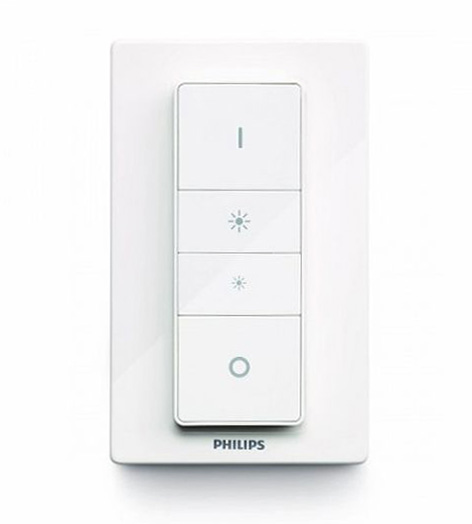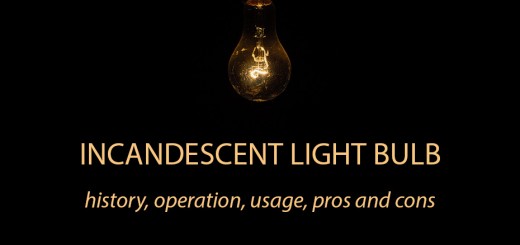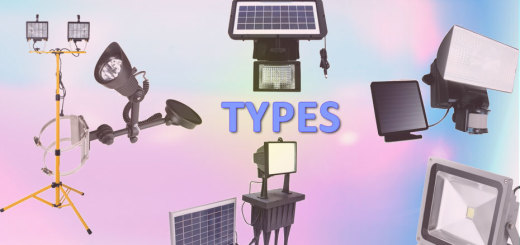What are Light Dimmers and Which Type of Light Bulbs are Dimmable?
As technologies are constantly being evolved, changed and improved, it has been possible to achieve many solutions that already have or will have great positive impact on the ways how we deal with numerous everyday tasks. When it comes to your home and tailoring your needs for proper and comfortable living, electric light is something that we simply cannot imagine our life without, especially during the darkest months of the year.
However until traditional incandescent bulb was upgraded to a whole new level introducing LED and fluorescent bulbs, lighting formed quite a significant part of our monthly electricity bills, too.
Luckily those times are long gone and more new features additional to energy-saving bulbs are being invented in order to ensure maximum energy efficiency. One of such innovations is light dimmer that is used to adjust light levels according to one’s needs. More and more people are choosing light dimmers but there is a vast majority of people to whom this invention is still something unknown and new.
What are light dimmers?
Speaking in very simplified terms, dimmers are devices that are used to lower and adjust the brightness of light (the amount of light). It is achieved by changing the voltage waveform in the lamp and thus making it possible to change and adjust the intensity of the brightness.
Accordingly, by using a good dimmer you will be able to reduce the voltage supplied to the lamp which will result in decrease in consumption and costs. Plus the lifetime of your lamp will increase which means that you will have to change your bulbs less often.
Although dimmer is relatively new invention, it has experienced rapid changes and improvements throughout the years. It all began in 1896 when Granville Woods patented a safety dimmer which actually was not that safe and was far from being energy-efficient.
The next major change in improving dimmers followed only in 1959 when Joel S. Spira, the founder of Lutron Electronics Company, invented a dimmer that included tapped autotransformer and a diode. This contrivance was already quite energy efficient and could be installed in an electrical wall-box.
From then on dimmers have been adjusted and complied with remote control systems enabling a lot greater possibilities to how we can adjust our lights and manage it even with much larger lights that require a lot more energy than your small table lamp.
Nowadays, dimmers and dimmer switches are used both in commercial industries such as theatres and concert halls and in households.
You will see numerous types of dimmers in the market as they range in the size depending on the purpose. While small household dimmer requires installation of one switch, professional dimmers are mainly controlled by digital control systems such as DALI or DMX that can also be managed via Ethernet connection.
Types of dimmers
As mentioned above, nowadays dimmers serve more than just a single purpose and there is a great scope of different type of dimmers available serving different situations and matching with different lamps. When purchasing your own light dimmer, keep in mind that not all light dimmers are designed to control all types of bulbs.
- Universal Dimmer. Universal dimmers are designed to control incandescent, halogen, dimmable LED and dimmable CFL bulbs. They offer great dimming at full-range and it is very unlikely that you will experience flickering of lights if using an universal dimmer. The only thing that cannot be forgotten is to check (and double-check) if your LED or CFL bulbs are actually dimmable ones.
- High Wattage Dimmers. Designed to control high wattage lighting and lamps that control numerous bulbs.
- Electronic Low Voltage Dimmer. ELV dimmers are used for controlling low voltage transformers and dimmable LED power supplies.
- Magnetic Low Voltage Dimmer. Great for work with recessed lights.
- Incandescent/Halogen Dimmer. Works for controlling the brightness of incandescent and halogen lights. Only these types of bulbs can be used together with this dimmer and at attempt to connect it to LED or CFL bulbs can cause a huge damage to your lamp and can be possibly dangerous.
- Fluorescent Dimmer. Designed for use with fluorescent lamps.
- Dimming Sensor. These are the newest generation dimmers which combine adjusting the brightness with energy efficient control system and motion sensors (links). These are the smartest dimmers available in the market and they have gone as far as using software that analyses the controlled area and performs digital adjustments, automatically changing the sensitivity and timer settings.
Also the styles of dimmers can be chosen according to the aesthetic and functional needs providing:
- Tabletop dimmers;
- Lamp dimmers;
- Socket dimmers;
- Slide switches;
- Rotary switches;
- Digital dimmers;
- Toggle switches.
Which types of light bulbs are dimmable?
It is possible to find a dimmer switch for nearly every type of bulb but, if you want to stick to a simple and inexpensive solution, it is advised not to choose any arc lighting bulbs e.g. mercury vapor, metal halide or sodium vapor, as they require more specialized dimming equipment.
Also, ask the retailer which of the available products have been tested for dimming by manufacturers. If the shop’s personnel do not have enough knowledge on these matters, check the manufacturer’s website or try contacting them via phone or e-mail. The most common bulbs that can be dimmed are:
- Fluorescent light bulbs. Not all of the fluorescent light bulbs are made to be compatible with light dimmers (they need a special dimmable ballast for that) so check the product’s description carefully prior purchasing a fluorescent bulb that you would like to dim.
- LED light bulbs. Dimmable LED light bulbs can be dimmed with a normal resistive dimmer. They consume very low wattages and are extremely energy efficient. However, there are also non-dimmable LED lamps that won’t work with any of the dimmers and can be damaged if connected to any.
- Incandescent and halogen light bulbs. Works with nearly every dimmer switch and can be dimmed completely. However the production and usage of the incandescent light bulb is slowly being decreased and stopped in many countries as now there are more energy-efficient bulbs out there. Similarly as incandescent lamps, also halogen bulbs are easy to be controlled by a dimmer and they are compatible with several types of dimmers.






Yes, but I still have a question. I have “Dimmable LED” lights in my bathroom. I do not want them to “dim”. I want then to stay on the same level as when I turn them ON. When I turn them on the level is HIGH, but for no know reason they DIM (or go completely out) on their on. Why do they dim for no apparent reason? Lights are made by FEIT Electric-60W, 90 CR I; 8,8watts.
Are you sure you have the right wattage for the lights you have? That might be one of the things causing problems with dimming.
My question is can flood lights be dimmed?
It depends on the lights themselves. Some do have the feature built-in, others don’t. But it’s possible to buy dimmable flood lights.